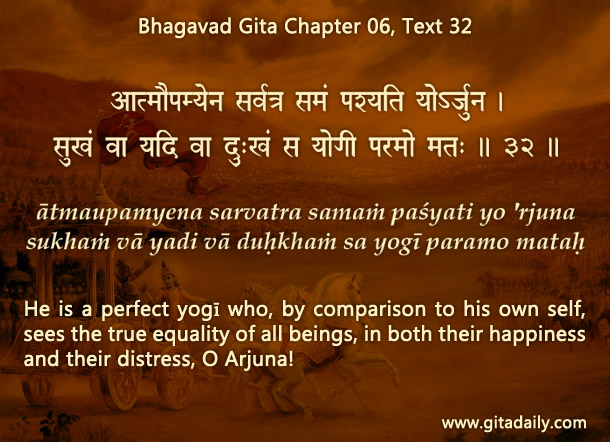The Bhagavad-gita in its sixth chapter analyzes the process of ashtanga-yoga. While such yoga is nowadays seen primarily as a tool for shaping and strengthening the body, the Gita is clear about the world-transcending thrust of yoga: Serious yogis need to renounce the world and retreat to a sacred, secluded place for lifelong exclusive dedication to yoga practice.
Yet after describing how yogis renounce the world, the Gita (06.32) declares the topmost yogi to be not those who regard the world with detachment or disdain, but those who regard it with concern and compassion. Having realized by their own experience how disconnection from spiritual reality brings misery and how reconnection with spiritual reality brings happiness, they want to share their joy with everyone.
Thus, their thrust is not so much on renouncing the material for the spiritual, but on bringing the joys of the spiritual level of reality to those who are still at the material level of consciousness. Just as people in an epidemic zone who have been cured by a potent medicine can commiserate with the pains of those still afflicted, spiritualists who have been cured of materialism by the potent process of yoga can commiserate with the pains of those still trapped in materialistic consciousness.
The Gita declares in its previous verses (06.30-31) that such compassionate yogis are personalists, for they see the personal manifestation of the Absolute Truth, Krishna, pervading all of existence. Understanding that the fully realized vision is not merely of the divorce of spirit from matter, but of the harmonization of both spirit and matter with their supreme source, they strive to help everyone progress towards that harmonization.
Such harmonization can be best achieved by bhakti-yoga, which efficaciously integrates personal realization and public compassion for individual and social well-being.

Explanation of article:

Leave A Comment